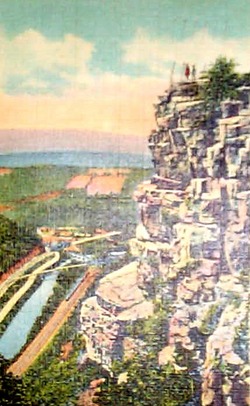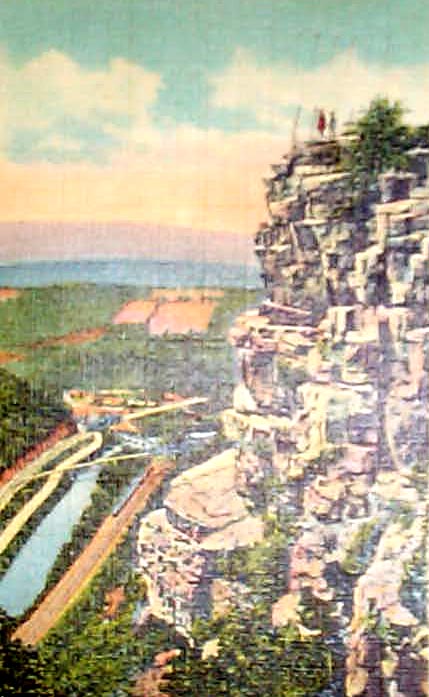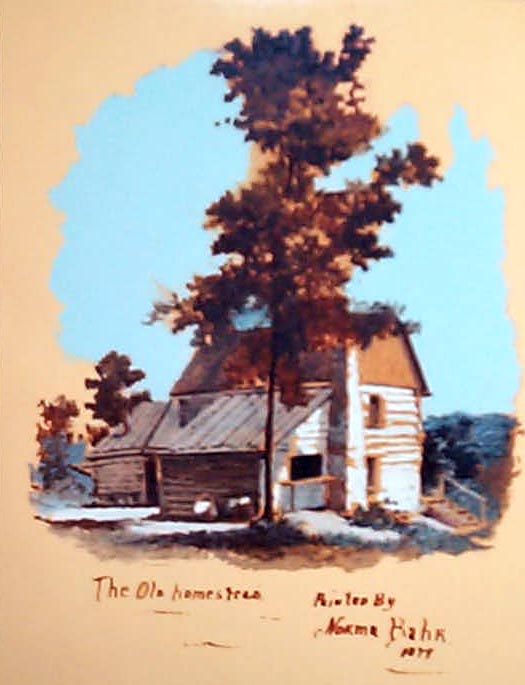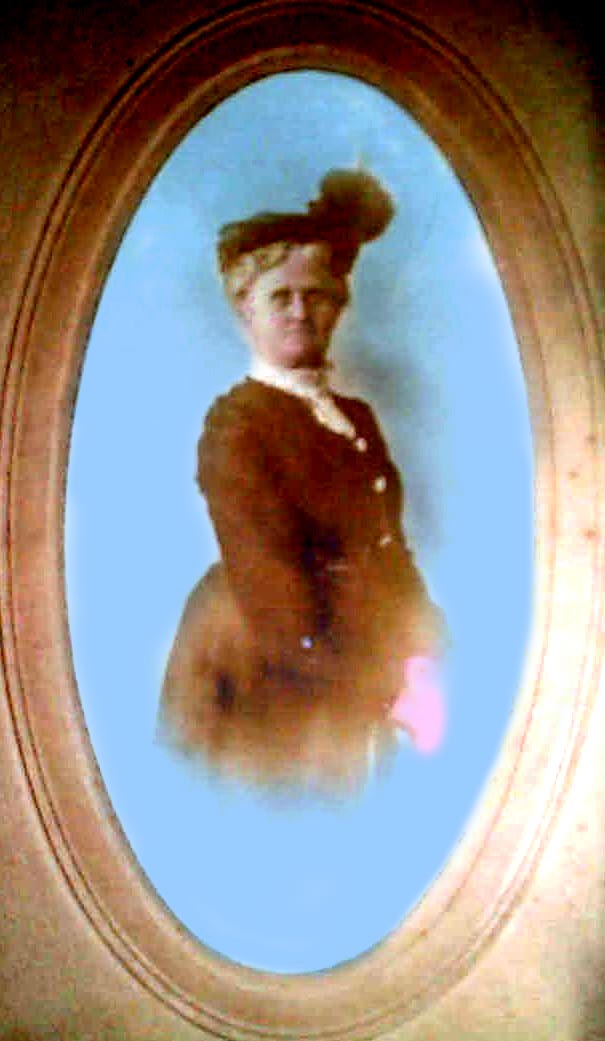Frederick was the great great grandson of Johannes Martin Baer and Maria C. Niedermuller of Greilsheim/Main Franchen c.1697. He was the great grandson of Conrad Frederich Baer (born 1725) and Johanna Wegert (born 1728); and the grandson of John Michael Baer (born 1768) and Anna B. Weidermier (born 1772). His parents were John Jacob Bahr (born 1795), who married Anna Margaretha Kenne (born 1800) in Leimen, Baden-Wuerttemberg, where Frederick and his seven other siblings: Johannes Bahr, Anna Maria Bahr, Johann Michael Bahr, Johann Philipp Bahr, Anna Margaretha Bahr, Elizabetha Bahr and Johann Leonhard Bahr, were born.
Older sister Anna Margaretha, married Frederick Stutz (a lithographer)in New York City in Nov. 1853, the year Frederick is thought to have immigrated, most likely through the port of NY. It is possible he attended his sister's wedding.
The man, Frederick John:
In an 1885 newspaper interview, he was described as a well- known innovative farmer, who was short and stocky in stature, weighing about 140 lbs. No photos have yet to be found of him.
Routes from Sandusky to Long Island:
Frederick immigrated at age 17, and the first we hear of him, he had settled in Upper Sandusky, Ohio by 1858, if not sooner.
Meanwhile, Margaret Kessler (Frederick's future wife), her siblings and her father, Peter Kessler, settled in Sandusky four years before Frederick. By 1859, Frederick married Margaret (Margaret Kessler Bahr [see photo and DeadFred.com]) and their first child, Norma, was born (Norma Virginia Davis) in Sandusky.
But, by 1860, Norma was a year old and living with her parents in Queens, NY, according to 1860 NY census records [NOTE: because of the birth/marriage time-frames, it is very possible Margaret was pregnant "almost" out of wedlock. It is calculated that every two years from 1859, Margaret was pregnant, bearing eight to ten* children.]
So, in that year, Frederick, Margaret and Norma had moved to Jamaica City, Queens Co., Long Island, where they boarded with his older sister Anna Margaretha (Margaret), her husband, Frederick Stutz, and the two Stutz children, Caroline and Matilda. Working as a gardener, family legend says Frederick Bahr owned an orchard there, and by 1862-63, a second child, Frederick John Bahr, Jr., was born.
[NOTE: Frederick's brother, Joh. Leonhard [see memorial], after immigrating c. 1864, also boarded briefly with his older sister in Long Island before joining the Civil War. Meanwhile, the family legend says that Frederick (possibly with Leonard) owned a movie theater in Sandusky is in error in that Leonard didn't immigrate until Frederick was living in NY.]
From Long Island to Unionville, PA:
By 1865, at the end of the Civil War, they moved to Unionville, PA (1 of 3), where three more children were born: Harvey Lewis Bahr, Annie (Anne Edith Bahr Stevens) & Minnie (Minnie Bahr Miller-Gayhardt).
From Unionville to Back Creek, VA:
By 1871, the Bahr family had moved to Back Creek (12 mi. East of Winchester), in Frederick County, VA, where sixth child, Leonard Bahr, was born. Most likely he was named after his uncle Leonhard.
From Back Creek to Wills Mountain in Cumberland:
By 1872-73, Frederick moved his family to Cumberland, MD. In 1873, seventh child, Elizabeth Katherine Ingels, was born.
By 1874, Frederick and Margaret mortgaged tracts of land known as "Crooked Billet" and "Mount ____" atop the 1,000 ft. high Wills Mountain (near "Lover's Leap")[see photo], and either built a log cabin [see photo of 1878-79 painting], or moved into same but built by a former land owner, Jack C____. But their mortgage was not recorded and was subsequently lost.
And in 1875, eighth child, Centennial Bahr, was born.
The saga continues:
By 1877, a severe depression hit Cumberland and many people left. The two top Cumberland industries were coal mining and lumbering. Soup kitchens were opened for the poorest folk and it is not known if the Bahr family availed themselves or if they were able to grow their own food.
According to an 1880 census, all the children were living at the cabin. They worked hard and, according to census records, did not attend school. Also, according to census, Margaret could not read nor write [although she co-signed the deed of mortgage for the land].
Frederick John:
His son-in-law, Tom Ingels, described Frederick as tight-fisted. If Frederick had a lost inheritance or kept it in reserve, most likely his family was living in poverty. Frederick's son, Leonard, remembered his father as being a cruel, hard-driven man, abusive in discipline and indenturing his children [a common practice] to neighbors.
Frederick, by all accounts, was an intelligent man who knew farming and carpentry. In an 1885 newspaper interview, he was described as a "well-known innovative farmer," who was "short and stocky in stature, weighing about 140 lbs." No photos have yet to be found of him.
Frederick was also described in a B&O RR magazine as an "energetic, eccentric, indefatigable German." Certainly he was a man with ideas. Family history states that Frederick opened a beer garden and a bowling alley atop Wills Mountain to help make money. Frederick also built railroad tracks up Wills Mountain to move up people in carts drawn by winches driven by mules at the top. Apparently not working well enough, he replaced the animals with steam power, but there was a lack of water.
He envisioned using a "flying ship" to propel paying customers and apparently devoted all his time and energy towards making his flying inventions (popular at that period of time particularly in France - so he must have read about them), and getting money to fly them.
Working in West VA:
Frederick was given the nickname "Mountaineer of West Virginia." In a newspaper article dated Aug. 24, 1885 entitled "West Virginian on the Wing," it was stated that his hydrogen balloon was hid in the Knobly Mountains in W. VA and would remain there until a patent was obtained.
Margaret was quoted that her husband "could be successful," and helped by hand-sewing his canvas sails.
His son, Leonard, later remembered the inventions were destroyed 3 times: "by fire, by enemies, and by the wind carrying it into trees."
Obtaining the amount of highly flammable hydrogen he required cost Frederick a lot of money (which money he had hard times getting). Family legend has it that Frederick returned to Germany to get money, but his tight-fistedness and the time span doesn't allow for a trip. His son Leonard wrote that his father "sank all his money (into his inventions) and soon after died."
By 1884, his children, Norma and Annie, had already left the home cabin and were living in Baltimore and Norma was attending the earliest Maryland Art Institute.
In 1884-85, the Scharif Cumberland Business Directory lists Frederick Bahr as a laborer living in Mineral Co., West VA.
But on Sept. 23, 1885, another newspaper announced that Frederick was to have his flying demonstration in a ball park in Cumberland City [though no account can be found yet for its success or failure].
Without specifics, it is reasonable that Frederick died circa late 1885 to 1887. It is said that Margaret buried him somewhere on Mt. Savage. Most likely, sons Harvey and Frederick probably buried their father [or had him buried]. It is said Margaret spit on his grave, calling him a "devil" so there must have been some bad times between the two, particularly at the end.
Moving to Baltimore:
By 1888, widowed Margaret was listed as settled in Baltimore. By Baltimore Business Directory listings, it is reckoned only Minnie, Leonard, Elizabeth and Centennial remained in the Cumberland area for a short time after Frederick's death, but by 1894, these children had moved to Baltimore too. Frederick Jr. and Harvey (then married with children) and who had lived in Mt. Savage, left their railroad jobs and moved to Baltimore around the same time.
Back at Wills Mountain:
The lost mortgage was defaulted on by Frederick and Margaret, and after his death, a new mortgage was made and recorded. The tract of land with the cabin was sold by public auction in 1889 to another German and "Wills Mountain Inn" (later used as an asylum) was built in its place, around the turn of the century. Sons Leonard, Harvey and Centennial (and other Bahr relatives) visited the site the summer of 1928 and again in the mid-1930's. Later, their children went back in the 1950's and 1970's with no availability to enter the property. The Inn/asylum foundation still remains. The mountain itself has been sold many times for real estate and other development. Last owner, Jim Silvestri, sold the property to an unknown entity for $1 million and the entry road still remains closed to the public.
__________________________
[*On a later census, it is mentioned that Margaret had ten children. If true, then two of the ten did not survive and it is surmised they were lost in 1879 or between 1887-88.]
See also: Wikipedia.com -- Frederick John Bahr / Lover's Leap; and search internet for "Wills Mountain, Cumberland, MD."
We are still looking for further details and memorabilia. Please contact me with info.
Frederick was the great great grandson of Johannes Martin Baer and Maria C. Niedermuller of Greilsheim/Main Franchen c.1697. He was the great grandson of Conrad Frederich Baer (born 1725) and Johanna Wegert (born 1728); and the grandson of John Michael Baer (born 1768) and Anna B. Weidermier (born 1772). His parents were John Jacob Bahr (born 1795), who married Anna Margaretha Kenne (born 1800) in Leimen, Baden-Wuerttemberg, where Frederick and his seven other siblings: Johannes Bahr, Anna Maria Bahr, Johann Michael Bahr, Johann Philipp Bahr, Anna Margaretha Bahr, Elizabetha Bahr and Johann Leonhard Bahr, were born.
Older sister Anna Margaretha, married Frederick Stutz (a lithographer)in New York City in Nov. 1853, the year Frederick is thought to have immigrated, most likely through the port of NY. It is possible he attended his sister's wedding.
The man, Frederick John:
In an 1885 newspaper interview, he was described as a well- known innovative farmer, who was short and stocky in stature, weighing about 140 lbs. No photos have yet to be found of him.
Routes from Sandusky to Long Island:
Frederick immigrated at age 17, and the first we hear of him, he had settled in Upper Sandusky, Ohio by 1858, if not sooner.
Meanwhile, Margaret Kessler (Frederick's future wife), her siblings and her father, Peter Kessler, settled in Sandusky four years before Frederick. By 1859, Frederick married Margaret (Margaret Kessler Bahr [see photo and DeadFred.com]) and their first child, Norma, was born (Norma Virginia Davis) in Sandusky.
But, by 1860, Norma was a year old and living with her parents in Queens, NY, according to 1860 NY census records [NOTE: because of the birth/marriage time-frames, it is very possible Margaret was pregnant "almost" out of wedlock. It is calculated that every two years from 1859, Margaret was pregnant, bearing eight to ten* children.]
So, in that year, Frederick, Margaret and Norma had moved to Jamaica City, Queens Co., Long Island, where they boarded with his older sister Anna Margaretha (Margaret), her husband, Frederick Stutz, and the two Stutz children, Caroline and Matilda. Working as a gardener, family legend says Frederick Bahr owned an orchard there, and by 1862-63, a second child, Frederick John Bahr, Jr., was born.
[NOTE: Frederick's brother, Joh. Leonhard [see memorial], after immigrating c. 1864, also boarded briefly with his older sister in Long Island before joining the Civil War. Meanwhile, the family legend says that Frederick (possibly with Leonard) owned a movie theater in Sandusky is in error in that Leonard didn't immigrate until Frederick was living in NY.]
From Long Island to Unionville, PA:
By 1865, at the end of the Civil War, they moved to Unionville, PA (1 of 3), where three more children were born: Harvey Lewis Bahr, Annie (Anne Edith Bahr Stevens) & Minnie (Minnie Bahr Miller-Gayhardt).
From Unionville to Back Creek, VA:
By 1871, the Bahr family had moved to Back Creek (12 mi. East of Winchester), in Frederick County, VA, where sixth child, Leonard Bahr, was born. Most likely he was named after his uncle Leonhard.
From Back Creek to Wills Mountain in Cumberland:
By 1872-73, Frederick moved his family to Cumberland, MD. In 1873, seventh child, Elizabeth Katherine Ingels, was born.
By 1874, Frederick and Margaret mortgaged tracts of land known as "Crooked Billet" and "Mount ____" atop the 1,000 ft. high Wills Mountain (near "Lover's Leap")[see photo], and either built a log cabin [see photo of 1878-79 painting], or moved into same but built by a former land owner, Jack C____. But their mortgage was not recorded and was subsequently lost.
And in 1875, eighth child, Centennial Bahr, was born.
The saga continues:
By 1877, a severe depression hit Cumberland and many people left. The two top Cumberland industries were coal mining and lumbering. Soup kitchens were opened for the poorest folk and it is not known if the Bahr family availed themselves or if they were able to grow their own food.
According to an 1880 census, all the children were living at the cabin. They worked hard and, according to census records, did not attend school. Also, according to census, Margaret could not read nor write [although she co-signed the deed of mortgage for the land].
Frederick John:
His son-in-law, Tom Ingels, described Frederick as tight-fisted. If Frederick had a lost inheritance or kept it in reserve, most likely his family was living in poverty. Frederick's son, Leonard, remembered his father as being a cruel, hard-driven man, abusive in discipline and indenturing his children [a common practice] to neighbors.
Frederick, by all accounts, was an intelligent man who knew farming and carpentry. In an 1885 newspaper interview, he was described as a "well-known innovative farmer," who was "short and stocky in stature, weighing about 140 lbs." No photos have yet to be found of him.
Frederick was also described in a B&O RR magazine as an "energetic, eccentric, indefatigable German." Certainly he was a man with ideas. Family history states that Frederick opened a beer garden and a bowling alley atop Wills Mountain to help make money. Frederick also built railroad tracks up Wills Mountain to move up people in carts drawn by winches driven by mules at the top. Apparently not working well enough, he replaced the animals with steam power, but there was a lack of water.
He envisioned using a "flying ship" to propel paying customers and apparently devoted all his time and energy towards making his flying inventions (popular at that period of time particularly in France - so he must have read about them), and getting money to fly them.
Working in West VA:
Frederick was given the nickname "Mountaineer of West Virginia." In a newspaper article dated Aug. 24, 1885 entitled "West Virginian on the Wing," it was stated that his hydrogen balloon was hid in the Knobly Mountains in W. VA and would remain there until a patent was obtained.
Margaret was quoted that her husband "could be successful," and helped by hand-sewing his canvas sails.
His son, Leonard, later remembered the inventions were destroyed 3 times: "by fire, by enemies, and by the wind carrying it into trees."
Obtaining the amount of highly flammable hydrogen he required cost Frederick a lot of money (which money he had hard times getting). Family legend has it that Frederick returned to Germany to get money, but his tight-fistedness and the time span doesn't allow for a trip. His son Leonard wrote that his father "sank all his money (into his inventions) and soon after died."
By 1884, his children, Norma and Annie, had already left the home cabin and were living in Baltimore and Norma was attending the earliest Maryland Art Institute.
In 1884-85, the Scharif Cumberland Business Directory lists Frederick Bahr as a laborer living in Mineral Co., West VA.
But on Sept. 23, 1885, another newspaper announced that Frederick was to have his flying demonstration in a ball park in Cumberland City [though no account can be found yet for its success or failure].
Without specifics, it is reasonable that Frederick died circa late 1885 to 1887. It is said that Margaret buried him somewhere on Mt. Savage. Most likely, sons Harvey and Frederick probably buried their father [or had him buried]. It is said Margaret spit on his grave, calling him a "devil" so there must have been some bad times between the two, particularly at the end.
Moving to Baltimore:
By 1888, widowed Margaret was listed as settled in Baltimore. By Baltimore Business Directory listings, it is reckoned only Minnie, Leonard, Elizabeth and Centennial remained in the Cumberland area for a short time after Frederick's death, but by 1894, these children had moved to Baltimore too. Frederick Jr. and Harvey (then married with children) and who had lived in Mt. Savage, left their railroad jobs and moved to Baltimore around the same time.
Back at Wills Mountain:
The lost mortgage was defaulted on by Frederick and Margaret, and after his death, a new mortgage was made and recorded. The tract of land with the cabin was sold by public auction in 1889 to another German and "Wills Mountain Inn" (later used as an asylum) was built in its place, around the turn of the century. Sons Leonard, Harvey and Centennial (and other Bahr relatives) visited the site the summer of 1928 and again in the mid-1930's. Later, their children went back in the 1950's and 1970's with no availability to enter the property. The Inn/asylum foundation still remains. The mountain itself has been sold many times for real estate and other development. Last owner, Jim Silvestri, sold the property to an unknown entity for $1 million and the entry road still remains closed to the public.
__________________________
[*On a later census, it is mentioned that Margaret had ten children. If true, then two of the ten did not survive and it is surmised they were lost in 1879 or between 1887-88.]
See also: Wikipedia.com -- Frederick John Bahr / Lover's Leap; and search internet for "Wills Mountain, Cumberland, MD."
We are still looking for further details and memorabilia. Please contact me with info.











